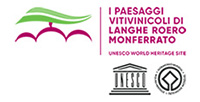
Civic Museum - History

The Museum is an old cultural institution, even if intermittently opened to the public and in different locations.
On the 25th of January 1910, following the wishes left in the will of countess Clara Leardi, the city council approved the creation of the Museum in Casale Monferrato and submitted the proposal to the city’s administrative board on the 23rd of February for the final confirmation, accepted on the 24th of March 1910.
The Gipsoteca Bistolfi, however, was established on the 5th of July 1966 with the approval of the city council. Later, the confirmation made by the city’s administrative board chose for the location to be the former convent of Santa Croce, ratifyied in 1981 with the creation of the Museum’s office within the municipality.
Under the name “Museo Civico e Gipsoteca Bistolfi”, the Museum, as we know it now, was staged and opened to the public in 1995 in its current location, formally inaugurated by professor Umberto Eco.
At the entrance, visitors are welcomed by commemorative marble busts from the 1800s portraying illustrious representatives of the Vidua-Leardi family, one of which is indeed Clara Leardi, the donor of the first artworks collection in 1854.
The links below are the official documents sanctioning the opening of the Museum (all in Italian)
The former convent of Santa Croce
The Museum is located in the rooms of an architectural complex that has had uninterrupted life for six centuries.
The first unit of the convent dates back to the 13th century with the Umiliati monks, followed by the Agostiniani Conventuali monks which, in the 14th century, with the help of the Monferrato’s Marquise and the noble Gaspardone family, expanded the convent and rebuilt the church. To this day, it remains only the perimetral wall structure of the church and the facade from the 1700s, made by Magnocavalli and facing via Roma (the street perpendicular to the Museum).
During the 1470s, the monks from the Agostiniani Osservanti di Lombardi took up residence and were able to further expand the monastery by acquiring a new donation from Guglielmo VIII Paleologo of a section of the walls and nearby respective moat. The restoration works to embellish, especially in the cloisters, proceeded between the 1500s and late 1700s including the dormitories and the chapter rooms on the first floor. In 1801, following the decree from the French government, the convent and the church were terminated: the convent was destined to become Maison de la Mairie (the Municipal offices) and the Church was stripped of every ornament.


 Delibera di Giunta comunale del 25 gennaio 1910
Delibera di Giunta comunale del 25 gennaio 1910